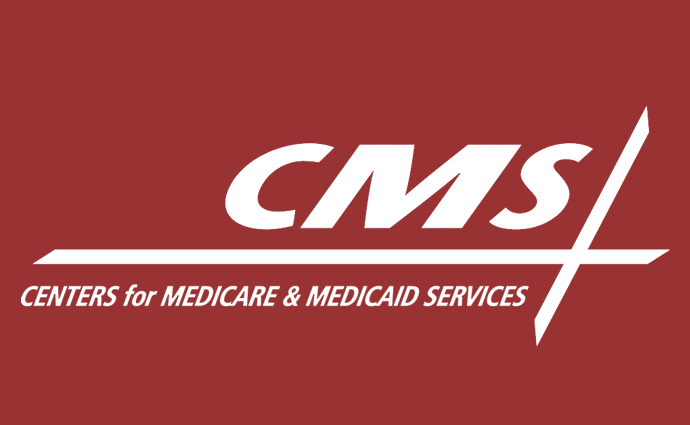How Fowler Plans to Refresh CMMI’s Value-Based Care Vision
Ten years after the ACA created CMMI, newly minted head Liz Fowler plans to leverage lessons learned to emphasize system transformation and health equity.

Source: Xtelligent Healthcare Media/Centers for Medicare & Medicaid Services
- The healthcare system is at a critical point in its transition to value-based care a decade after implementation of the Affordable Care Act and its Center for Medicare and Medicaid Innovation (CMMI), according to CMMI’s newly minted director Liz Fowler, PhD, JD.
“The goal [of the ACA] was to create a system that rewards better outcomes, better health, and lower costs, and we've made huge strides, but we have a long way to go,” Fowler said at the National Association of ACOs (NAACOS) 2021 Spring Conference earlier today, her first public comments since taking the role in March.
Fowler, who also serves as Deputy Administrator of CMS, is the latest person to lead the transition from fee-for-service to value-based care and reimbursement. But she plans to leverage lessons learned from a decade of experience and more recently, a public health crisis, to advance the transition to value-based care under the Biden administration.
“I feel like over the last 10 years since the Center was established, we've lost some consensus in the stakeholder community about what we're trying to achieve and where we're heading,” Fowler explained.
Under her leadership, Fowler intends to refresh CMMI’s strategy for achieving the value-based care vision, with a closer eye on multi-payer alignment and health equity—a healthcare issue that has really come to light during the COVID-19 pandemic.
READ MORE: Entering the Next Phase of Value-Based Care, Payment Reform
“I plan to consider health equity at every stage of our models, from model development to participant recruitment through model evaluation,” Fowler stated.
CMMI is already executing this refreshed strategy for value-based care. Days after Fowler’s appointment, the Center undertook a review of all CMMI-run alternative payment models. The agency has since paused several new models, including the Geographic Direct Contracting Model, Primary Care First Model’s Seriously Ill Population option, and the Kidney Care Choices Model.
It has also made changes to other models, such as stopping the application cycle early for the Global and Professional Direct Contracting Models and delaying the ACO track for the upcoming Community Health Access and Rural Transformation (CHART) Model.
Fowler made it clear during her remarks that, despite the changes, CMMI’s “commitment to value-based care has never been stronger.” Rather, the changes are part of ensuring the path forward to value-based care is “sustainable and meaningful.”
“Health system transformation is not easy, and it is an iterative process,” she explained. “Ultimately, at CMMI, we want our alternative care models to position participants for success and sometimes that means speeding up when there's an opportunity and sometimes it means taking a beat to ensure that a forthcoming model can realistically deliver on what's intended and that it's the strongest option based on our evidence and data.”
READ MORE: NAACOS Calls For Renewed HHS Focus, Funding on Value-Based Care
Operating alternative payment models that deliver health system transformation rather than focusing on whether models achieve formal evaluation measures is Fowler’s goal as the new leader of CMMI.
“Is cost savings the most important measure of success or does quality improvement count just as much? Is risk-bearing among providers the key to unlocking value? And at CMMI, is the ultimate goal expanding a model to become a permanent part of Medicare or is healthcare transformation the ultimate goal? It could be both, but in my time at CMMI, I want to take a look at these questions and think about the bigger picture issue and focus on longer term health system goals,” Fowler elaborated.
Speaking on financial risk, Fowler also said that its role in value-based care “may not be one-size-fits-all.”
Pushing providers to take on more financial risk through CMMI and Medicare alternative payment models was a major component of the previous administration’s value-base care vision despite staunch pushback from providers.
Fowler still believes that CMMI needs to “push the laggards” but the agency also needs to carve a “clear path for the innovators who are ready, willing, and able to take on that risk” and “reach those who have challenges participating.” But she sees a more promising path forward with multi-payer alignment.
READ MORE: Best Practices for Value-Based Purchasing Implementation
“The change is more lasting if multiple payers are involved,” Fowler stated.
During her tenure, CMMI expects to expand its portfolio models to reach into Medicaid and engage other payers.
Providers can also expect new alternative payment models out of CMMI to address health disparities by requiring the collection, reporting, and use of data on race and ethnicity, Fowler stated. CMMI will be focused on testing and scale models that address the longstanding healthcare issue.
“When you meet with us, it’ll be something we are asking about,” she said.
Overall, these new priorities for CMMI are meant to push value-based care forward after a decade of hard work on the part of providers, payers, and the government. Because even though the ACA had ambitious goals for value-based care by this time—50 percent of healthcare payments under alternative payments models by 2018—there are still many out there who have yet to dip their toes in value-based waters. Realistically, just 36 percent of payments were tied to an alternative payment model by that time, according to data from the Health Care Payment Learning & Action Network.
“We need to find a way to bring everyone along,” Fowler stated. “We can't have fee-for-service remain a comfortable place to stay.”
